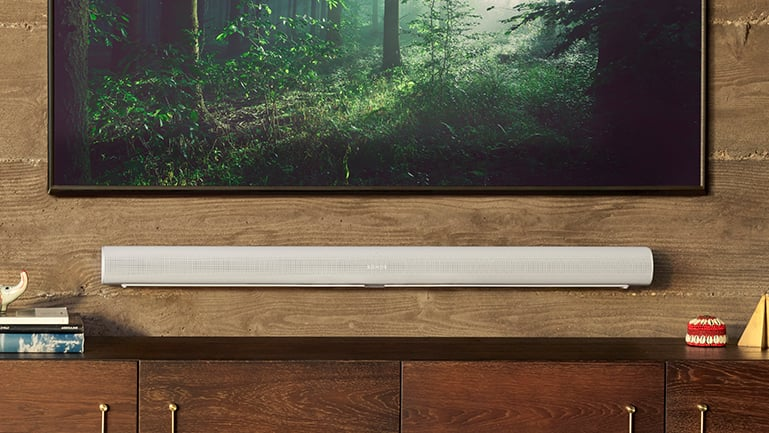Elevate Your Entertainment: Choosing the Perfect Soundbar for Streaming
In today's home entertainment landscape, streaming services like Netflix, Disney+, Max, and Spotify are our primary sources of movies, TV shows, and music. While 4K Smart TVs deliver stunning visuals, their built-in speakers often fall short, failing to convey the immersive audio intended by creators. This is where a soundbar for streaming becomes an indispensable upgrade, transforming your living room into a true cinematic or concert-hall experience.
A good streaming soundbar doesn't just make sound louder; it makes it clearer, more dynamic, and spatially richer, ensuring you catch every whispered dialogue and feel every booming explosion.
Why Your Streaming Needs a Soundbar
Television speakers are typically small and rear-firing, limiting their ability to produce rich bass, crisp dialogue, or expansive soundstages. A soundbar offers several immediate improvements:
Enhanced Dialogue Clarity: Dedicated center channels often found in soundbars isolate voices, making dialogue easy to understand, even during action-packed scenes.
Immersive Surround Sound: Many soundbars use virtual surround technology or include wireless rear speakers to create a more enveloping audio experience, placing you right in the middle of the action.
Powerful Bass: A built-in or external wireless subwoofer adds depth and impact to explosions, music, and dramatic moments, something tiny TV speakers simply cannot achieve.
Broader Soundstage: Soundbars project audio much wider than your TV speakers, creating a more expansive and engaging listening area.
Music Streaming: Beyond TV and movies, many soundbars double as high-quality Bluetooth or Wi-Fi speakers for streaming music directly from your phone or favorite services.
Key Features to Look for in a Soundbar for Streaming
When selecting a soundbar to enhance your streaming, consider these crucial features:
Audio Formats (Dolby Atmos & DTS:X):
Dolby Atmos and DTS:X are immersive audio technologies that add a "height" dimension to sound, making it feel like effects are coming from above you (e.g., helicopters flying overhead, rain falling). Many premium streaming services offer content encoded with these formats. For the best experience, look for soundbars with up-firing speakers or advanced virtual processing.
HDMI eARC (Enhanced Audio Return Channel):
This is the most critical connection for modern soundbars. HDMI eARC allows your TV to send high-resolution, uncompressed audio (including lossless Dolby Atmos via Dolby TrueHD) from its built-in streaming apps or connected devices directly to the soundbar through a single HDMI cable. Ensure both your TV and soundbar have eARC ports for optimal audio quality.
Connectivity Options (Wi-Fi, Bluetooth, Optical):
Wi-Fi Connectivity: Crucial for multi-room audio systems (like Sonos or HEOS), higher-resolution music streaming (Spotify Connect, Apple AirPlay 2, Chromecast built-in), and over-the-air firmware updates. Wi-Fi streaming offers better sound quality and range than Bluetooth.
Bluetooth: Standard for quick and easy wireless connection from your phone or tablet for casual music listening.
Optical (TOSLINK): A common digital audio connection, good for older TVs without HDMI ARC/eARC, but it cannot carry advanced formats like Dolby Atmos.
Channel Configuration (2.0, 3.1, 5.1, X.Y.Z):
2.0 or 2.1: Basic stereo (2.0) or stereo with a subwoofer (2.1). Great for dialogue clarity and music, but limited surround.
3.1: Adds a dedicated center channel for clearer dialogue, plus a subwoofer.
5.1 (or 5.1.2/5.1.4): Offers true or virtual surround sound, often with a wireless subwoofer and sometimes rear satellite speakers. The third number (e.g., .2 or .4) indicates the number of up-firing speakers for Dolby Atmos/DTS:X height effects. More channels generally mean a more immersive experience.
Built-in Streaming Services & Voice Assistants:
Some premium soundbars integrate popular music streaming services directly or feature voice assistants like Amazon Alexa or Google Assistant, allowing you to control music, smart home devices, and even TV functions with voice commands.
Types of Soundbars for Every Need
All-in-One Soundbars: A single bar that sits under your TV. Ideal for minimalist setups, offering significant audio improvement over TV speakers.
Soundbars with Wireless Subwoofer: The most popular configuration. The soundbar handles mid-range and highs, while the wireless sub adds powerful bass, often without unsightly cables.
Soundbars with Wireless Rear Speakers: For a true surround sound system without the complexities of a full AV receiver setup. These offer a highly immersive experience for movies and shows.
Soundbases: A chunkier, box-shaped unit designed to sit directly under your TV, often incorporating a built-in subwoofer. Good for small spaces.
Top Brands to Consider
Leading brands in the soundbar space known for their quality and innovation include:
Sonos: Renowned for multi-room audio, seamless setup, and excellent sound quality (e.g., Sonos Arc Ultra, Sonos Beam Gen 2).
Samsung: Offers a wide range, often with Q-Symphony technology that syncs with compatible Samsung TVs for enhanced sound.
LG: Strong contenders, especially with their WOW Orchestra feature for LG TVs.
Sony: Known for clear dialogue and impressive virtual surround.
Bose: Delivers premium sound with sleek designs and good smart features.
JBL: Offers powerful sound and good value.
TCL & Hisense: Provide excellent features like Dolby Atmos and subwoofers at competitive, budget-friendly prices.
Connecting Your Soundbar
The most common and recommended connection method is HDMI eARC (or HDMI ARC if eARC isn't available on your TV or soundbar). Simply connect an HDMI cable from the eARC/ARC port on your TV to the corresponding port on your soundbar. For older TVs, an optical digital audio cable is an alternative.
Budgeting for Your Soundbar
You can find a good soundbar for streaming at almost any price point:
Budget (Under $200): Basic stereo soundbars, often with Bluetooth, offering a significant upgrade over TV speakers.
Mid-Range ($200 - $600): Introduces wireless subwoofers, virtual surround, and sometimes basic Dolby Atmos/DTS:X support, along with Wi-Fi connectivity.
Premium ($600+): Full-fledged immersive audio with true Dolby Atmos/DTS:X, multi-room capabilities, voice assistants, and often includes or supports wireless rear speakers for a comprehensive home theater audio experience.
Upgrading to a dedicated soundbar is one of the most impactful ways to enhance your streaming entertainment. By choosing a model with the right features and connectivity, you'll unlock a richer, more engaging audio experience for all your favorite movies, shows, and music.

